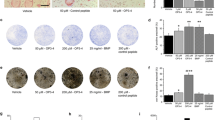Abstract
Purpose
To investigate the efficacy and safety of N-(2-hydroxypropyl) methacrylamide (HPMA) copolymer-dexamethasone conjugate (P-Dex) in the collagen-induced arthritis (CIA) mouse model.
Methods
HPMA copolymer labeled with a near infrared fluorescence (NIRF) dye was administered to mice with CIA to validate its passive targeting to inflamed joints and utility as a drug carrier system. The CIA mice were treated with P-Dex, dexamethasone (Dex) or saline and the therapeutic efficacy and skeletal toxicity evaluated using clinical scoring and micro-computed tomography (μ-CT).
Results
The NIRF signal of the HPMA copolymer localized to arthritic joints consistent with its passive targeting to sites of inflammation. While the CIA mice responded more rapidly to P-Dex compared to Dex, the final clinical score and endpoint μ-CT analyses of localized bone erosions indicated that both single dose P-Dex and dose equivalent daily Dex led to comparable clinical efficacy after 30 days. μ-CT analysis of the proximal tibial metaphyses showed that P-Dex treatment was associated with significantly higher BMD and BV/TV compared to Dex and the saline control, consistent with reduced glucocorticoid (GC) skeletal toxicity.
Conclusion
These results validate the therapeutic efficacy of P-Dex in the CIA mouse model. P-Dex treatment averted the adverse effects of GC’s on systemic bone loss, supporting its utility in clinical development for the management of rheumatoid arthritis.







Similar content being viewed by others
Abbreviations
- AA:
-
Adjuvant-induced arthritis
- AIBN:
-
2,2’-Azobisisobutyronitrile
- BMD:
-
Bone mineral density
- BS/TV:
-
Bone surface to tissue volume or bone surface density
- BV/TV:
-
Bone volume to tissue volume or bone volume density
- CIA:
-
Collagen-induced arthritis
- Dex:
-
Dexamethasone
- DIPEA:
-
N,N-Diisopropylethylamine
- DMF:
-
Dimethylformamide
- ELVIS:
-
Extravasation through leaky vasculature and inflammatory cell-mediated sequestration
- GC:
-
Glucocorticoid
- HPMA:
-
N-(2-hydroxypropyl) methacrylamide
- MA-Dex:
-
N-methacryloylglycylglycylhydrazyl dexamethasone
- Mw :
-
Weight average molecular weight
- NIRF:
-
Near infrared fluorescence
- NS:
-
Non-significant
- P-Dex:
-
Dexamethasone prodrug based on N-(2-hydroxypropyl) methacrylamide (HPMA) copolymer
- PDI:
-
Polydispersity index
- PTM:
-
Proximal tibial metaphysis
- RA:
-
Rheumatoid arthritis
- RAFT:
-
Reversible addition-fragmentation chain transfer
- ROI:
-
Region of interest
- Tb.Sp:
-
Trabecular separation
- Th.N:
-
Trabecular number
- VOI:
-
Volume of interest
References
Klareskog L, Catrina AI, Paget S. Rheumatoid arthritis. Lancet. 2009;373(9664):659–72.
van Vollenhoven RF. Treatment of rheumatoid arthritis: state of the art 2009. Nat Rev Rheumatol. 2009;5(10):531–41.
Hoes JN, Jacobs JW, Buttgereit F, Bijlsma JW. Current view of glucocorticoid co-therapy with DMARDs in rheumatoid arthritis. Nat Rev Rheumatol. 2010;6(12):693–702.
Wang D, Miller SC, Liu XM, Anderson B, Wang XS, Goldring SR. Novel dexamethasone-HPMA copolymer conjugate and its potential application in treatment of rheumatoid arthritis. Arthritis Res Ther. 2007;9(1):R2.
Liu XM, Quan LD, Tian J, Alnouti Y, Fu K, Thiele GM, et al. Synthesis and evaluation of a well-defined HPMA copolymer-dexamethasone conjugate for effective treatment of rheumatoid arthritis. Pharm Res. 2008;25(12):2910–9.
Quan LD, Purdue PE, Liu XM, Boska MD, Lele SM, Thiele GM, et al. Development of a macromolecular prodrug for the treatment of inflammatory arthritis: mechanisms involved in arthrotropism and sustained therapeutic efficacy. Arthritis Res Ther. 2010;12(5):R170.
Waksman BH. Immune regulation in adjuvant disease and other arthritis models: relevance to pathogenesis of chronic arthritis. Scand J Immunol. 2002;56(1):12–34.
Parfitt AM, Drezner MK, Glorieux FH, Kanis JA, Malluche H, Meunier PJ, et al. Bone histomorphometry: standardization of nomenclature, symbols, and units. J Bone Miner Res. 1987;2(6):595–610.
Brand DD, Latham KA, Rosloniec EF. Collagen-induced arthritis. Nat Protoc. 2007;2(5):1269–75.
Seeuws S, Jacques P, Van Praet J, Drennan M, Coudenys J, Decruy T, et al. A multiparameter approach to monitor disease activity in collagen-induced arthritis. Arthritis Res Ther. 2010;12(4):R160.
Ren K, Purdue PE, Burton L, Quan LD, Fehringer EV, Thiele GM, et al. Early detection and treatment of wear particle-induced inflammation and bone loss in a mouse calvarial osteolysis model using HPMA copolymer conjugates. Mol Pharm. 2011;8(4):1043–51.
Bendele AM. Animal models of rheumatoid arthritis. J Musculoskelet Neuronal Interact. 2001;1(4):377–85.
NIH Consensus Development Panel on Osteoporosis Prevention, Diagnosis, Therapy. Osteoporosis prevention, diagnosis, and therapy. JAMA. 2001;285(6):785–95.
Angeli A, Guglielmi G, Dovio A, Capelli G, de Feo D, Giannini S, et al. High prevalence of asymptomatic vertebral fractures in post-menopausal women receiving chronic glucocorticoid therapy: a cross-sectional outpatient study. Bone. 2006;39(2):253–9.
Weinstein RS. Glucocorticoid-induced osteoporosis. Rev Endocr Metab Disord. 2001;2(1):65–73.
Lukert BP, Raisz LG. Glucocorticoid-induced osteoporosis: pathogenesis and management. Ann Intern Med. 1990;112(5):352–64.
Goldstein MF, Fallon Jr JJ, Harning R. Chronic glucocorticoid therapy-induced osteoporosis in patients with obstructive lung disease. Chest. 1999;116(6):1733–49.
Yuan F, Quan LD, Cui L, Goldring SR, Wang D. Development of macromolecular prodrug for rheumatoid arthritis. Adv Drug Deliv Rev. 2012;64(12):1205–19.
Quan L, Zhang Y, Crielaard BJ, Dusad A, Lele SM, Rijcken CJ, et al. Nanomedicines for inflammatory arthritis: head-to-head comparison of glucocorticoid-containing polymers, micelles, and liposomes. ACS Nano. 2014;8(1):458–66.
Ren K, Dusad A, Yuan F, Yuan H, Purdue PE, Fehringer EV, et al. Macromolecular prodrug of dexamethasone prevents particle-induced peri-implant osteolysis with reduced systemic side effects. J Control Release Off J Control Release Soc. 2014;175:1–9.
ACKNOWLEDGMENTS AND DISCLOSURES
Research reported in this manuscript was supported by National Institute of Arthritis and Musculoskeletal and Skin Diseases of the National Institutes of Health under award number R01 AR053325 and Nebraska Arthritis Outcome Research Center (NAORC). We thank Mr. Arun Tatiparthi of Micro Photonics for his assistance with the micro-CT analysis. Y.Z. was supported by the Bukey Fellowship from University of Nebraska Medical Center.
Author information
Authors and Affiliations
Corresponding author
Rights and permissions
About this article
Cite this article
Quan, L., Zhang, Y., Dusad, A. et al. The Evaluation of the Therapeutic Efficacy and Side Effects of a Macromolecular Dexamethasone Prodrug in the Collagen-Induced Arthritis Mouse Model. Pharm Res 33, 186–193 (2016). https://doi.org/10.1007/s11095-015-1776-1
Received:
Accepted:
Published:
Issue Date:
DOI: https://doi.org/10.1007/s11095-015-1776-1




